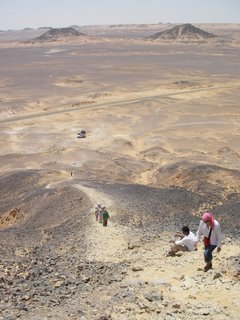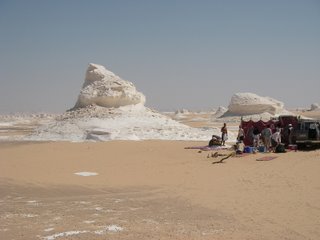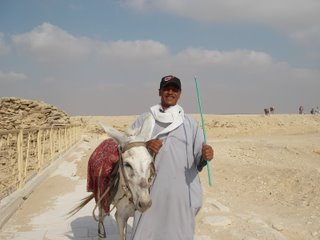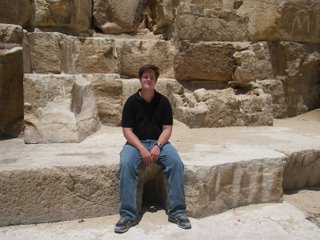In his 1947 novel,
My first encounter with this novel came in the fall term of my freshman year at Middlebury in my History and Culture of the Modern Middle East class taught by Professor Febe Armanios. At the time that I read the novel, I did not understand Mahfouz’s stature as a writer; I didn’t grasp that I was reading such a major piece of Egyptian literature. Or a better way of putting it would be to say that I didn’t understand just how great a writer Mahfouz in the eyes of the Egyptians. On top of that, the characters in the book seemed so foreign to me, so different from anybody you’d meet in the
All of that changed when I came to
The most difficult and intriguing character in the novel is Hamida, a young girl desperate to break free from life in the alley. Her desire to escape the alley is fascinating and she stands as a rebel among dozens of characters who seem happy to spend their days in the confines of the alley. It was with the desire to understand better this enigmatic character’s need for escape and with the desire to pursue further knowledge of one of
The alley appears in only one of my guide books, and even that guide book leaves something to the imagination because it shows Midaq Alley at the end of a twisted series of tiny alleyways in the heart of old Islamic Cairo. I took a taxi to the al Husayn mosque, one that I wrote about in an earlier post, “The Maze.” Getting out there, I pulled out the guide book and began piecing together my route. The book’s map of Islamic Cairo is more or less just a series of lines etched on a page that vaguely detail the twists and turns of dirt roads and alleys.
First I walked down the major street, al-Azhar, and turned right onto the road across from the Gamhuriya (one of the biggest buildings in Islamic Cairo). With that, I was once again lost in the world of dirt roads, donkeys, wild smells (both pleasant and frightening), and salesmen. I knew that I had to turn right and I judged that that was about a hundred yards down the path. As I walked down the tiny street, I realized that I was at the spice market in Khan il-Khalili. Every store was piled to the ceiling with finely ground spices and I saw several men sitting on the ground barefoot and Indian style with a giant sieve basket, refining the spices they wanted to sell. Not entirely sure where I was going, I stopped to check my guide book. And like flies to a picnic, I was instantly surrounded by salesmen asking where I was from, what I wanted to buy, what my name was, and god knows what else. I slammed the guide book shut and continued on to find a quieter spot. But when I stopped again, I encountered the same result. So I was forced to read the map on the move, avoiding the donkeys, the beggars, and the massive inexplicable holes in the road as I made my way. By the time I had reached another mosque, I knew I had gone too far; my zoomed in map had no mosque on it. And so I went back, keeping my head down to avoid the jeers from the salesmen I had brushed by with the assumption of never seeing them again.
Finally I found my turn-off. The scale of the map convinced me that this was the right place to go. This alley was half the size of the last road and it was made dark by fabrics that had been spread over the roofs of the buildings. This road felt damp and dim, and off the beaten path. There were no salesmen to accost me here, only old men smoking shesha and other younger men selling items that were not directly aimed at tourists. In one store I saw sacks of wool piled from floor to ceiling. I knew that the alley that led to Midaq Alley would be off this road. I trudged along this tiny alley looking for a break in the wall that could constitute the entrance to the alley. Every salesman’s stall that had a back room got me peering anxiously to see if it was going to open up into what I was looking for. After making it far enough down the road, I was convinced that I had missed it. I turned back and started the search again. About half the way back I took another look at a café I’d passed the first time. This café was set about twenty feet off of the alley in a gap between two of the buildings. There were two men sitting outside smoking shesha and I saw open doors in front of the table that seemed to imply that there might be more of a café within. It should be noted that this was a café in the loosest, most rustic sense of the word. The reason that I had not given this café a second look on my first time by is that it seemed as though it was contained by the sides of two buildings and by the back of another.
It was then that I remembered two things that gave me further pause. First, the opening scene of the book is set at a café in Midaq Alley. This weighed on me along with the recollection I had of a friend telling me that Midaq Alley was hard to find because they’d taken down the sign, but that they kept the sign in a small café in the alley. These two bits of information tugged at me just enough to walk down that way and take a look. I didn’t feel self-conscious when I was approaching the café; it was only after I had buzzed by the entrance and was walking straight toward what appeared to be a solid wall that I could begin to imagine the two old men behind me having a chuckle over the idiot American who was mysteriously walking towards a wall. But when I got into the corner, I knew that I had found what I had come all this way looking for.
At the very end of the right wall is a slender staircase that snuck off straight and to the right. I had heard that a staircase guarded the alley, and I beamed with pride as I came to the realization that I had found it. All the buildings ahead of me were made of light brown sand stone, a big difference from the deep gray facades of many buildings in the area. Also, the buildings were all two or three stories as opposed to the typical five floor buildings that line the streets of the rest of Islamic Cairo. I charged up the stairs, thrilled to see the grittiness of life in the alley. At the top of the stairs, the passage took a ninety degree turn to the left, and as soon as I had rounded the corner, Midaq Alley lay out in front of me. In all, it was about fifty feet long with dirt for a ground and almost entirely empty! As I walked down the startlingly short expanse of the alley, there were old shut down stands on either side and no people to be seen. Most of the way down on the left there was one on small shoe stand open with a man sitting inside quite literally twittling his thumbs. I asked him in Arabic if this was Midaq Alley, and he nodded with great enthusiasm. He became slightly less excited when he realized that I wasn’t going to buy anything.
After the initial shock at how small and how empty the alley was, the experience began to take another dimension entirely. Suddenly I began to realize that I was standing in the middle of literary greatness. I could reach out both arms and touch either side of the alley with wingspan to spare; I could walk the length of the alley in fifteen seconds. For those glorious moments, Midaq Alley belonged to me. It was an amazing feeling. I stood for five minutes just admiring the place, and then I decided to leave. As I turned the corner to head back down the stairs, I heard a voice from overhead that made me stop and look. A little old man in a gray jalabiyya was perched on a stoop a floor above my head. He looked old enough that it seemed to me that he may well have sat in that same place watching the goings and coming in Midaq Alley fifty years before. I wasn’t able to hear what he said the first time, so I asked him to repeat it. “Mahfouz,” he said. “Yes,” I replied. All I got in return was an approving nod, and I went on my way. As I passed the café at the entrance, I glanced in and noticed for the first time the many pictures of Naguib Mahfouz on the wall. I decided not to try to get a photo with the sign, and so I moved on, allowing myself to get swept away in the busier alleyways of Islamic Cairo, fully understanding why Hamida would have wanted so badly to get out of Midaq Alley but also grasping its attraction that made so many happy to spend their many years in its tiny confines.














